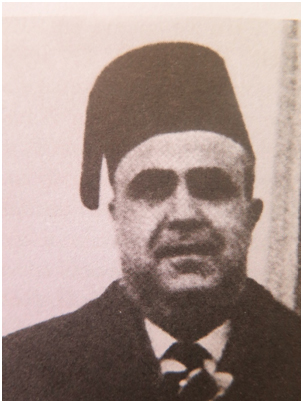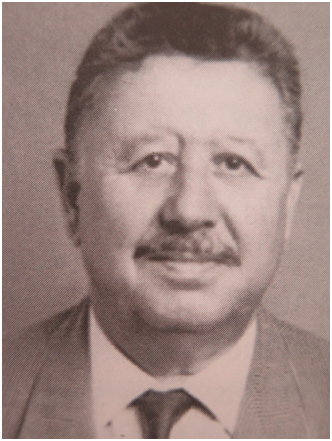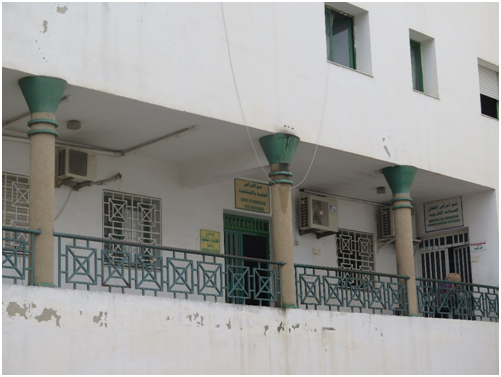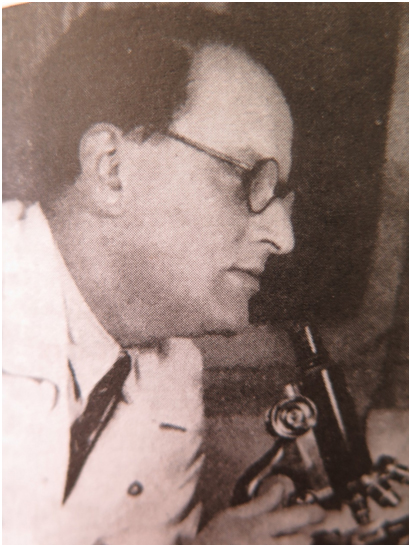Introduction
The Republic of Tunisia is the northernmost country in Africa, covering 165,000 square kilometres. As of 2013, its population isestimatedatjustunder 10.8 million. Itsnameisderivedfromits capital city, Tunis, whichislocated on the country'snortheastcoast. Tunisiaissituated on the Mediterranean coast of NorthAfrica, midwaybetween the Atlantic Ocean and the Nile Delta. It isbordered byAlgeria on the west and Libya on the southeast. It lies between latitudes 30° and 38°N, and longitudes 7° and 12°E. An abrupt southwardturn of the Mediterraneancoast in northernTunisiagives the country two distinctive Mediterraneancoasts, west-east in the north, and north-south in the east.The population of Tunisia, from a sociological, historical and genealogicalstandpoint, are made up of people of mainly distinct and mixed Arab,Berber, and Turkish descent.The first people known to history in whatisnowTunisiawere the Berbers. Numerouscivilizations and peoples have invaded, migrated to, or have been assimilatedinto the population over the millennia, with influences of population from Phoenicians/Carthaginians, Romans, Vandals, Arabs,Spaniards, Ottoman Turks and Janissaries, and French. There was a continuinginflow of nomadic Arabtribes from Arabia.The majority of Tunisia's population (around 98%) are Muslims while about 2% follow Christianity and Judaism or other religions. The bulk of Tunisiansbelong to the MalikiSchool of Sunni Islam. Arabic is the official languageand TunisianArabicis the national, vernacular variety of Arabic and isused by the public.
The Tunisian Society of Dermatology and Venereology (http://www.dermato-tunisie.org) was born in the 1st day of February 1980. Its first president was Dr.RachedLaajimi (Figure 1). Now, the membersof the society are more than 300 dermatologists. Many subgroups were also created (Lasers, Aesthetics, Psoriasis, Pediatric Dermatology, etc). An Annual meeting is organised on national regional or internationalbase.A new association for dermatologists who practice privately is recently founded.

Figure 1. Dr RachedLaajimi
Academic dermatologic institutions
In Tunisiain 2015, there are 7 dermatologydepartmentsin university- relatedhospitals: four in Tunis (La RabtaHospital, Charles Nicolle Hospital, Habib ThameurHospital and the MilitaryHospital), one in Sousse (FarhatHachedHospital), one in Monastir (Fattouma Bourguiba Hospital) and one in Sfax (HedichakerHospital). In the following, a briefhistory of thesedermatologycenters has been brought:
Dermatology Department of La Rabta Hospital
The history of the La Rabta Hospital is linked to big epidemics of variola, typhus, plague and cholera, which were common and deadly in the beginning of the 20th century. This hospital was a convenient site (La Rabta in Arabic is a hill) to isolate the affected patients. In 1924 the “lazaret” of la Rabta had some constructed departments and was named the “hospital of contagious patients” until 1930. Then it was named “Ernest Conseil Hospital” on the name of the French doctor who was leading it for many years. In 1985 the name of the hospital was changed to “La Rabta hospital”.
The dermatology department was founded in 1940 and headed by the French doctor Chatellier, then a few years after by Jean Ragu until 1953. Dr.RachedLaajimi- the first Tunisian dermatologist- headed the department from 1953 to 1957. Then he moved to the dermatology department of Charles Nicolles hospital. The department was closed until 1960 when his assistant, Dr. Amor Khalfat,(Figure 2) took the responsibility of the department until 1987. Dr. Amor Khalfat was the first Associate professor admitted by examination of the new faculty of medicine of Tunis in 1973. He was succeeded by Prof. Mahmoud Chaffai for two yearswho left the department for private practice. Then Prof. Amel Ben Osman headed the department until 2012. A new and modern building was inaugurated in 1996 (Figure 3).Now it is directed byProf.MouradMokni.

Figure 2. Dr AmorKhalfat
In the first half of the 20th century, the dermatology was dominated by syphilis, which was a very common disease. In the sixties, syphilis declined largely and general dermatology was well established as a speciality. Progressively and during the years the department was enriched with a mycology laboratory, Phototherapy unit, lasers unit, pediatric dermatology and dermato-allergology. Since 2004, a research unit was established in the department,which was specialised on genetic skin diseases and autoimmune bullous diseases.
Dermatology departmentof Charles Nicolles Hospital
Under French protectorate, an official state hospital for the French residents was built in 1898 and was named "French civil hospital". Initially, there were only three departments: one for general surgery and two for general medicine. During years, the hospital was developed and many specialities were introduced. In 1932, adermatology centerwasfoundedby Dr. Antonio Cassar (Figure 4). He wasborn in Tunis in 1892 and hedidhismedicalstudies in Toulouse, France. He came back to Tunis in 1918 and practicedgeneralmedecine,thendermatology and venereology. The hospitalchangeditsname in 1944 for "Charles NicollesHospital". After the independance of Tunisia (1956), Dr.RachedLaajimiheaded the dermatologydepartment. He didhismedicalstudies in Paris, France. In 1937 and 1938,hestudieddermatology in Saint Louis Hospitalunder the responsibility of Prof.Gougerot. Thenhe came back to Tunis and practiceddermatology in SadikiHospitalthenin Ernest Conseilhospital (La Rabtanow) Hospital and finally in Charles NicollesHospital. In 1956,hewaselectedpresident of the TunisianMedical Society of Sciences. In the early seventies, Prof.Ridha Gharbiheaded the department of dermatology. He didhismedicalstudies in France and hisinternship in dermatology in SaintLouis hospital in Paris under the responsibility of Prof. Robert Degos. Whenhe came back to Tunis, hewasthe assistant of Dr.RachedLaajimi. He was the 2sd AssociateProfessornominated by examination in the new faculty of medecine of Tunis in 1973. Heintroducedmoderndermatologicactivitieslikedermatopathology, mycology, photobiology (withDr. Mohamed Zghal), electronicmicroscopy (withDr.LassadLahmar) and Immunofluorescence techniques (withProf. Mohamed Ridha Kamoun). He organisedmany international meetings and invitedmanyrespecteddermatologistsfrom all over the Europe. He left the department forprivatepractice in 1989. Prof. Mohamed Ridha Kamounwhowaschief of the department in Habib Thameurhospitaltookthe responsibility of the department. He wasamong the first group of medicaldoctorsgraduatedfrom the New Medicalfaculty of Tunis. In 2000, heorganised the meetings of the Pan Arableague of dermatology and hewas the co-founder of the Tunisian Association Against of SexuallyTranmittedDiseases and AIDS. In 2012, Prof. BecimaFazaatook the responsibility of the department. Shedevelopeddermatopathology and co-organisedmany international courses on dermatopathology. Verysadely, shedied in 2014. Now, Prof.ZeglaouiFatenis the head of the department.

Figure 3. Departement of dermatology La RabtaHospital

Figure 4. Dr Antonio Cassar
Dermatologydepartementof Habib ThameurHospital
This hospitalwasfounded by the Italiancommunity and wasnamed "Colonial ItalianHospital of Tunis" in 1900. It wastransferredfrom an anotheroldItalianhospitalfoundedin 1891. In 1907, itsnamewaschanged in "Joseph Garibaldi Hospital". In 1931, thedepartment of veneraldiseaseswasheaded by D.rSalvadore Di vittorio and the dermatologydepartment by his cousin Dr.AmedeeDi Vittorio.After the independence, the departmentwasheaded by Prof.HammadiLakhoua. Then in the eighties by Prof. Mohamed Ridha Kamoununtil 1988, by Prof.RafikaSouissiuntil 2001,then Prof.Insaf Mokhtar until 2015.During the last 10 yearsa new and modern departmentwasbuilt and wellequippedwith a specialinterest in lasertherapy, phototherapy and geneticdiseases. Aresearch unit wasalsoestablishedtheserecentyears. The Departmentisnowheaded by Prof. Sami Fenniche.
Dermatologydepartment of MilitaryHospital
In 1886, under the french protectorate, a smallmilitaryhospitalwasbuilt on the Belvedere Hill in Tunis. Aftermanyyears, the hospitalwasprogressivelydeveloped and wasnamed Louis Villard hospitalin 1937 on the name of a famous french militarybacteriologist. After the independencein 1956,therewasonlyan out patient unit for dermatologywithouta full time dermatologist. In 1986, ProfNéjibDossdirected the 1st independantdepartment of dermatology for militaryhealth. In 1989, all the Militaryhospitalmoved in a new, big and modern Hospital. The dermatologydepartmentisresponsible for the examination of the new recruitedsubjects and the skin health of all the military personnel and their parents. All the aspects of generaldermatologyweredevelopedwith a specialinterest in psoriasis and scabies.
Dermatologydepartment of FarhatHachedHospital- Sousse
This departmentis the major dermatology institution for central Tunisia. The departmentwasfoundedafter the independencein 1983 and washeaded by Prof.BechirJomaa. In 1992, Prof. Jomaaleft the hospital for private practice and Prof.RafiaaNouirahas been the chief of the departementuntilnow. Now all the activities of modern dermatologyhave been introducedwith a specialinterest on geneticdiseases, psoriasis, etc. A researchunit onoccupationaldermatologyisalsocreated.
Dermatologydepartement of Fattouma Bourguiba Hospital- Monastir
It is the youngestdepartment of dermatology. It wasfoundedin 1993. Prof.JamelZiliis the head of the departement. Now a big team of academicdermatologistsdevelopedavariety of dermatologicactivitieswith a specialinterest in allergic and occupationaldermatology. A research unit in skin allergologywasalsoestablished.
Dermatologydepartement of HediChakerHospital - Sfax
In 1974, themedicinefaculty of Sfax wasfounded and the principal hospitalbecame a university. Then, Prof. AbdemajidZahaf,a youngdermatologist,negotiatedfierclywith the authorities to createan out- patient dermatology unit within the department of internalmedecine. This situation existeduntil 1980, whena new and independentdepartment of dermatologywasestablished. This departmentis the referencedepartment for southTunisia. Progressively, itmoved to a modern departmentcovering all dermatologysubspecialities (Phototherapy, Allergology, Dermtologicsurgery, Peditricdermatology, Bullousdiseses). Prof.Zahafwas the co-founder of the Tunisian Association Against of SexuallyTranmittedDiseases and AIDS. He alsoorganised the international congressin 2003 for francophone dermatologists in Sfax whichhad a greatsuccess. From 2005, Prof. HamidaTurki has been the head of thisdepartment. The department has collaborations with multiple researchunits.
References
- Zitouna M.M La médecine en Tunisie 1881-1994. SIMPACT 1994
- Zitouna M. M L'Hôpital La Rabta, SIMPACT 1997.
- Zitouna M. M Haouet S. La faculté de Medecine de Tunis, Hier et aujourd'hui. Ed Centre de Publications Universitaires. 2000.
- Moatti L. La Mosaique médicale de Tunisie. Demeter 2008.
- Chadli A. L'enseignement médical en Tunisie. 2012.
- Gaumier B. Ernest Conseil (1879-1930). Un médecin Modeste et discret. BERG EDITION. 2013
- Huet M. Le pommier et l'olivier. Charles Nicolle, une biographie (1866-1936). BERG EDITION 2013.




